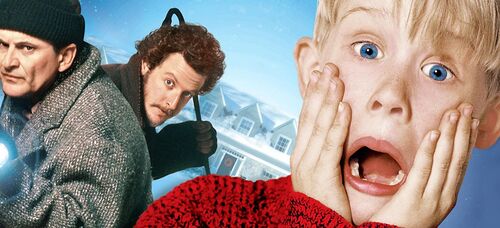
Orson Welles Season: A look back at Touch of Evil.
 Touch of Evil will blow you away within its first three minutes, a statement that can be used for very few films indeed. Like the majority of Welles’ movies, the opening moment is an ambitious piece of cinema that is mind blowing even by today’s standards.
Touch of Evil will blow you away within its first three minutes, a statement that can be used for very few films indeed. Like the majority of Welles’ movies, the opening moment is an ambitious piece of cinema that is mind blowing even by today’s standards.
The tracking shot to end all tracking shots – which has been referenced and replicated many times since – the long take of a car making the trip across the Mexican border is breathtaking.
The way in which Welles uses diegetic music from the different radio transmissions of passing cars, and the way in which the camera effortlessly and invisibly glides across the length of a town is wondorous; building tension and showing off on a technical level, in equal measures. And yes, that’s only the film’s first three minutes.
If you aren’t immediately hooked in those few minutes, there’s not much hope for you at all – yet, one of the best things about Touch of Evil is that it manages to maintain and carry the level of brilliance it achieves so early on, right until its final few moments.
As far as I’m concerned, it’s one of the greatest thrillers ever made – a masterpiece that’s just as influential as it is ahead of its time, for many reasons other than just its opening.

It all depends on which version of Touch of Evil you watch of course, the studios’ or Welles’ – this, like much of Orson’s work, was hacked by the studio without his permission – but if, for arguments sake, you watch Welles’ final cut – which you should – it’s dark, seedy, immersive and absolutely thrilling.
The story itself is about two detectives on different sides of the American-Mexican border. Charlton Heston plays the Mexican, Mike Vargas – without a Spanish accent; something Heston would later describe as one of the biggest acting mistakes he ever made – who, when a car explodes on the border, has to solve the case with Welles’ Captain Hank Quinlan.
Whilst Quinlan is hugely respected, the ‘rough around the edges’ detective is a bit of a racist and his methods are questionable. Needless to say, it doesn’t take long before Vargas and Quinlan clash, sparking a downward spiral for Quinlan into murder.
It’s the kind of story that the creators of True Detective would be envious of – a sinister and perverse tale, with a palpable sense of unease running through it. With drugs, strip joints and kidnapping, it’s about as risqué as filmmaking goes for its time and its thematic maturity still surprises me.

The performances are incredible, particularly Welles’ portrayal of Quinlan. Practically unrecognisable – the common misconception is this was how Welles actually looked at the time of filming, although layers of make up and the like were applied – Orson gives one of the best performances of his career – a wild-eyed, unhinged and moody piece of acting that showcases just how wonderfully talented an actor he was.
His supporting cast are great too, although Heston’s portrayal of Vargas has suffered ridicule over the years, but Welles is the star, the headline act that, that whenever he appears on screen, commands it with raw talent.It’s the ambiguity of Touch of Evil that remains the most interesting part of it though.
The way in which Welles plays with the ideas of good and bad, heroes and vilians, whilst constantly blurring the lines between each, is writing at its very best. You may think you know where the plot is going, or how you might feel about a certain character, but, long after the credits have rolled, I’d be surprised if you weren’t questioning your own morality.
No matter how many time you might watch the film, you’ll always find things you may have missed previously, clues to a character’s motivation, which will make you want to re-examine Touch of Evil time and time again.

Perhaps the secret behind its success is the fact that the studio stayed out of Welles’ way, during its production again. Welles himself has always cited this as one of his most enjoyable films to make and that’s plain to see in ever frame.
Essentially working under the same conditions as Citizen Kane, Touch of Evil is another example of what the genius could achieve when given free reign by the businessmen behind the picture. Touch of Evil is proof that Welles is one of the greats and much more than the man who simply made Citizen Kane.
Whilst visually and technically impressive, it remains a visceral and expertly crafted film noir, that is responsible for influencing some of the greatest cinema ever made


